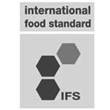Pink Pepper
(Schinus terebinthifolius)
Pink peppercorn – Ingl., Rosa pfeffer – Ted., Poivre rose – Fr, Pimienta rosa – Sp., Розовый перец - Russ.
Pink pepper belongs to the Anacardiacee family and is a native to Peru and Chile. It is not a variety of pepper: it takes its name because of similarity of its fruits, yet they have totally different texture and flavor. It is also cultivated in other parts of America, in Africa and some Mediterranean country. It is a small evergreen tree with aromatic leaves and clusters of pink fruit. It is remarkably able to adapt and tends to be rather invasive, so that in some states (Florida, Australia) its cultivation is controlled, in order to protect the existing flora and not to create environmental troubles.
dried pink pepper (ground or beans).
Food Composition
It contains resin, tannin, glucose
Culinary Use
Pink pepper is slightly spicy, and has a typical sweet-resinous aroma. Its berries should be used sparingly, as it can be slightly toxic.
Pink pepper is used to flavor fish recipes, risotto, meats, bakery and cakes, vinegars, wines. The mixture “Creole” is composed of black pepper, white pepper, green pepper and Pink pepper. It is often used to decorate dishes.
Healing Effect
Pink pepper, like pepper cubebe, is a great natural remedy for its diuretic, antiseptic and disinfectant properties. It is used in case of rheumatism, menstrual spasm, bronchitis, urinary system infections. It is chewed as a simple remedy for colds, coughs and asthma in its country of origin.
Preservation
The best preservation of pink pepper is in a cool, ventilated, poorly lit and dry place.





